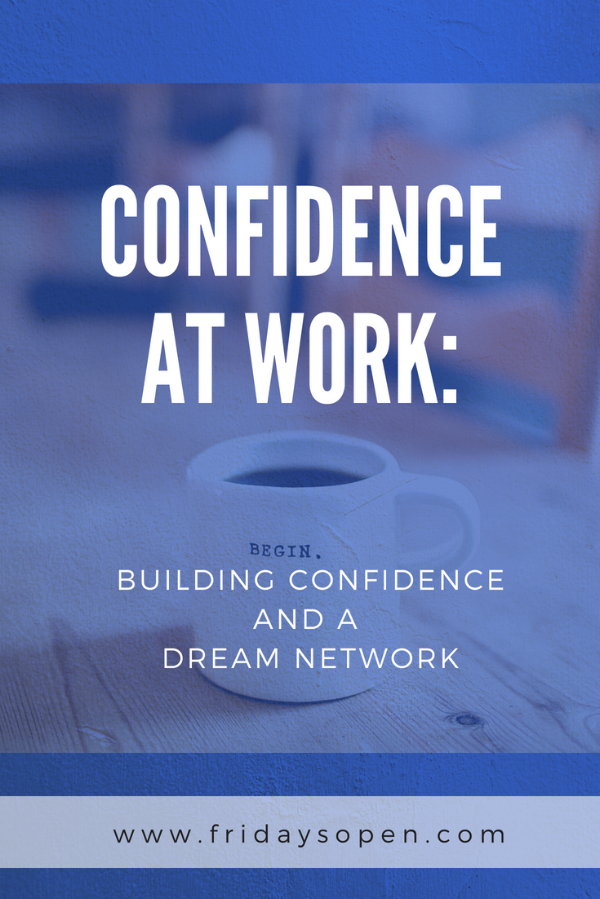"To shorten the consequences of negative situations at work, a confident leader uses tools to gain adequate thought perspective, accepting that setbacks at work do happen.
Confident leaders don’t overemphasize or catastrophize their part in the situation.
They look objectively at the situation, figure out how to do better next time and move on."
(From The Ultimate Guide: How to Be More Confident at Work)
magical Confidence
What if you had more confidence at work right this minute? Like, wave a magic wand, and *twinkle*twinkle* there it is?
What would be different?
Would it be the way you talk, walk? How about the way you dress, or even how you think?
How do you know when someone else has confidence?
I ask my clients that question often…how they know when someone else has confidence. And their answers are almost always alike.
How do you know when someone else has confidence?
Well, since we can’t be in someone else’s head and know their thoughts (although we sure do try to be sometimes, don’t we?), knowing someone else has confidence comes down to the possession of certain characteristics and traits that convey confidence, like voice projection, 'commanding the room,' positive body language...all those things we think of when thinking 'executive presence.'
Then there's the internal factors we think of that a person who possesses confidence must have - all those things we can't see, like positive self-talk. It would be tough to be confident and not have that, methinks.
And that positive self talk skill is one that lends itself to another key to leadership confidence - the ability to rebound {quickly} when mistakes are made.
And confident people do make mistakes.
Rebound and Resolve
So what is the difference between someone with solid confidence making a mistake a work and someone plagued by a lack of confidence making a mistake at work (besides the obvious difference in confidence level)?
The amount of time spent suffering from it.
The person lacking confidence and the person with confidence will experience the actual event that causes the setback similarly.
Here's how a person with low confidence at work might process it:
Through self talk: 'Ah crud, I messed up. I wish I hadn’t done that.'
With self doubt: 'That decision last month, look what’s happening now. Did I do the right thing? I don’t know. Did I make there right decision? I don’t know. Maybe I should have chosen differently...'
With self blame: 'This is all my fault (catastrophising). I should have known this.'
A person with great confidence at work might say one of those phrases too.
But they don't stay there. They continue to process. Quickly.
They move to problem solve.
They consider options.
They've built or have the mental agility to move beyond that mind-swirl
A Resilience Tool
Here’s the one tool that can help to process those setbacks. It has to do with putting things in perspective.
When things are out of perspective, meaning: the rememberance of the situation is out of line with what actually happened, we're usually coming from an emotional point of view.
Not that emotions can’t play a productive part. Usually, however, the emotional response is over-calibrated and the objective response (the ‘executive function’ portion that can bring levity into a situation) is overshadowed by the emotion.
Emotions like guilt, remorse, self-blame.
Here's a quick way to start processing and moving forward.
Grab a pencil and paper.
Think about something that happened at work that you'd like to move past.
Ask yourself what are some of the negative thoughts (or self-doubt, or self-blame) you're thinking about what happened? Choose two or three to work with and write them down.
Now, take the first thought and ask yourself, "Is this true?" and "What else is true about this situation?" "If i could do it over again, what did I learn?" "How is what happened a gift?"
Next, ask yourself "How do I want to feel about this situation?"
And then create one reframed sentence that supports those new feelings.
That's it. Out of your head and onto the paper. The act of writing it down alone helps to process it and interrupts the thought loop that's keeping you stuck.
Confident people might start a thought loop, but they interrupt the pattern before they get stuck.
And therefore, the time from the situation that's a setback occurs to the time they have learned from it and moved right on is lessened.
And that, my fellow leaders, is exactly why this is Confidence at Work Key #3 out of 17.
Here's a great "Truth Talk" exercise to guide you through.
Try it.


















